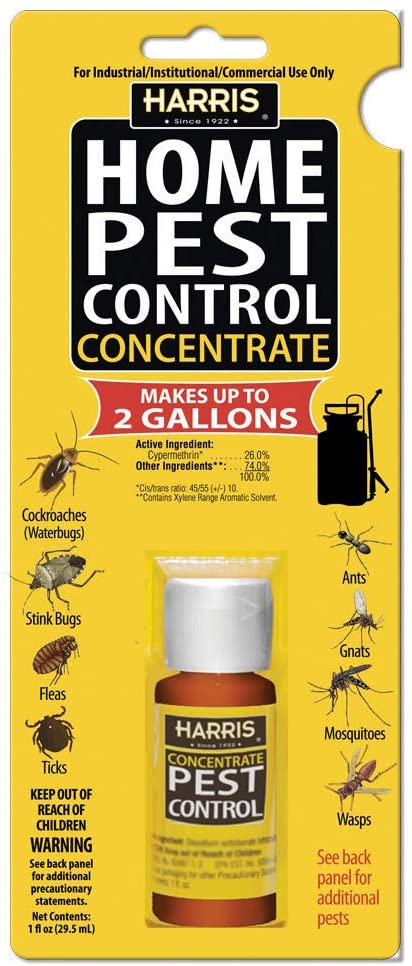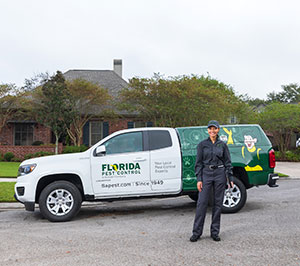Bed Bug Treatment Failure: Comparing Chemical Vs. Non-Chemical Solutions
In the world of pest control, particularly when managing the consistent issue of bed bugs, the selection in between chemical and non-chemical therapy services can be an essential one. Both methods offer unique benefits and drawbacks, influencing aspects such as performance, safety and security factors to consider, and general expense. By taking a look at the nuanced details of each method, a more clear understanding of which course to seek in resolving a bed insect invasion can be obtained.
Efficiency of Chemical Treatments
Chemical treatments for bed bug infestations have actually been commonly identified for their powerful and rapid efficiency in getting rid of these bugs. When thinking about the efficiency of chemical treatments, it is essential to comprehend that they can give a complete and quick solution to a bed insect issue.
In addition, chemical treatments have the advantage of supplying recurring effects, implying that they can remain to eliminate bed insects even after the preliminary application. This recurring activity is particularly valuable in combating any kind of possible re-infestations. In addition, the rapid activity of chemical treatments can bring relief to individuals facing extreme bed bug invasions, enabling them to restore control of their space quickly.
Safety Concerns With Chemical Solutions
One critical aspect that calls for careful factor to consider when making use of chemical solutions for bed bug therapy is making sure the safety and security of owners and the environment. While chemical therapies can be efficient in removing bed insects, they may posture risks otherwise managed effectively. Among the primary security worry about chemical solutions is the possible damage they can trigger to human health. Exposure to specific chemicals used in bed pest treatments can result in respiratory system issues, skin irritation, or other negative responses, particularly in people with pre-existing conditions or sensitivities. Additionally, improper application or dose of chemical pesticides can cause hazardous deposits remaining in the cured area, positioning lasting health dangers to occupants.
In addition, the environmental influence of chemical remedies is one more considerable factor to consider. Some chemicals made use of in bed pest treatments might be hazardous to beneficial pests, wild animals, and communities if they seep right into the dirt or water systems. It is necessary to make use of chemical therapies carefully, following safety and security guidelines, and thinking about much less toxic alternatives to reduce these dangers and make sure the secure and efficient administration of bed insect infestations.
Benefits of Non-Chemical Methods
Taking into consideration the potential safety worries and ecological impact associated with chemical options for bed bug therapy, checking out non-chemical approaches provides an encouraging choice with numerous distinct advantages. Non-chemical treatments are environmentally pleasant, as they do not add to air or water pollution, making them a lasting option for pest control.
In addition, non-chemical options can be effective in targeting bed pests, consisting of hard-to-reach areas where chemical treatments may not permeate. Approaches such as warm therapy, vacuuming, steam cleansing, and bed mattress encasements give complete removal without using damaging chemicals. Furthermore, non-chemical approaches can be less turbulent, needing very little preparation and allowing for quicker reentry into treated locations. On the whole, choosing non-chemical bed insect therapy methods not only focuses on security and environmental management but also makes sure effective and extensive bug control.
Limitations of Non-Chemical Treatments

In addition, non-chemical therapies typically need numerous applications to attain effective obliteration. This can be time-consuming and might not always guarantee total elimination of all bed insects and their eggs, especially in hard-to-reach or hidden places.
Additionally, the success of non-chemical treatments greatly depends on correct application and thoroughness, which can be challenging for people without expert know-how. Poor application of non-chemical techniques might lead to insufficient elimination, resulting in relentless problems and the demand for extra therapies.
As a result, while non-chemical treatments have their advantages, it is important to recognize these restrictions and consider them when figuring out one of the most effective method for managing bed bug invasions.
Expense Comparison: Chemical Vs. Non-Chemical Options
Given the constraints connected with non-chemical treatments, a necessary element to examine in the context of bed insect administration is the expense contrast in between chemical and non-chemical choices. Chemical treatments generally involve the application of insecticides by professionals, which can vary from $250 to $900 per area, relying on the intensity of the invasion and the size of the area to be dealt with. On the other hand, non-chemical therapies great site like warmth treatment or steam can be extra pricey, with prices varying from $1,000 to $6,000 for a whole home. While the initial cost of chemical treatments may seem lower, multiple treatments might be called for to totally eradicate the problem, potentially boosting the general cost. On the other hand, non-chemical choices may provide a much more sustainable and environmentally friendly solution, although they can be cost-prohibitive for some individuals. Ultimately, when considering the price of bed bug treatment choices, it is very important to evaluate the in advance expenditures against the efficiency and lasting sustainability of the picked method.
Conclusion

Thinking about the potential safety issues and environmental impact connected with chemical solutions for bed pest therapy, discovering non-chemical methods presents a promising alternative with numerous unique advantages.Offered the constraints linked with non-chemical treatments, a necessary facet to assess in the context of bed bug management is the expense contrast between chemical and non-chemical options. In contrast, non-chemical treatments like warm treatment or heavy steam can be more costly, with costs ranging from $1,000 to $6,000 for a whole home. While the first expense of chemical treatments may seem reduced, several treatments may be required to totally remove the invasion, possibly raising the general price.In verdict, when contrasting chemical and non-chemical bed insect therapy choices, it is vital to take into consideration effectiveness, security, benefits, limitations, scorpion extermination and price.